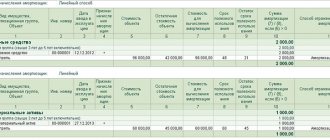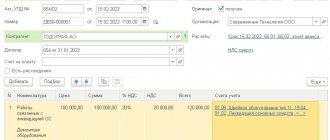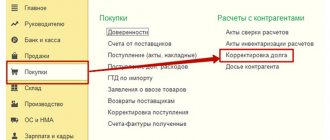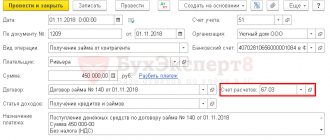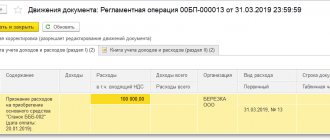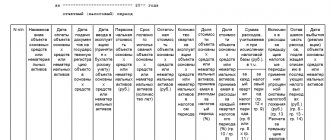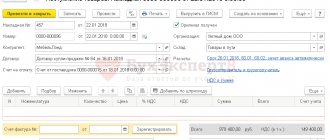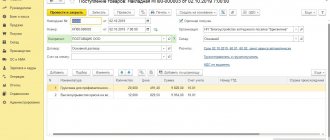Valuation of intangible assets is a comprehensive assessment of assets that do not have physical expression, but at the same time are valuable for the enterprise. Thus, intangible assets include:
- Property rights. These are rights to use land, water bodies and natural resources. Proof of ownership of these rights is a license issued for a certain period to an individual or legal entity.
- Intellectual property. This type of intangible assets distinguishes several subtypes: rights to objects of copyright and related rights (scientific, artistic works, computer programs and databases), rights to objects of industrial property (inventions, trademarks, industrial designs, etc.), rights on production secrets (know-how). Intellectual property is protected by a number of laws of the Russian Federation: “On copyright and related rights” (dated July 9, 1993), “On trademarks, service marks and appellations of origin of goods” (dated September 23, 1992), “On the legal protection of programs for Computers and Databases" (dated September 23, 1992) and others.
- Firm price (goodwill). This term refers to the business reputation of an enterprise or other object of assessment. The main characteristics of this intangible asset are: its presence only in the presence of excess profit; it cannot be separated from the enterprise (for example, sold).
- Deferred or deferred expenses. These are expenses incurred at the time of establishment of the enterprise and represent organizational expenses. For example, services for registering a company or payment for obtaining a license.
- Trademarks (TM)
Join the ranks of our clients
The norms of Chapter 25 of the Tax Code of the Russian Federation on intangible assets
According to paragraph 1 of Art. 256 of the Tax Code of the Russian Federation for the purpose of applying Ch. 25 of the Tax Code of the Russian Federation, depreciable property is the results of intellectual activity and other objects of intellectual property that are owned by the taxpayer (unless otherwise provided for in this chapter) and are used by him to generate income. Depreciable property is the results of intellectual activity and other objects of intellectual property with a useful life of more than 12 months and an initial cost of more than 100,000 rubles.
In accordance with paragraph 3 of Art. 257 of the Tax Code of the Russian Federation, for tax purposes, intangible assets are considered to be the results of intellectual activity acquired and (or) created by the taxpayer and other objects of intellectual property (exclusive rights to them) used for production purposes for a long time (over 12 months).
This norm determines that in order to recognize an intangible asset, it is necessary to have not only the ability to bring economic benefits (income) to the taxpayer, but also properly executed documents. They must confirm the existence of the intangible asset itself and (or) the taxpayer’s exclusive right to the results of intellectual activity.
Further in paragraph 3 of Art. 257 of the Tax Code of the Russian Federation contains a list of exclusive rights to certain objects that relate to intangible assets.
In order to correctly qualify an intangible asset, let us turn to the norms of the Civil Code of the Russian Federation.
What refers to intangible assets
There are many approaches, theories and classification criteria on the issue of classification of intangible assets. There are experts who do not use any signs at all when assessing. If a specific value meets the previously presented criteria, then it is an intangible asset.
- Intellectual property objects. This is a broad group of assets that includes several varieties. In particular, this includes:
- rights to objects of industrial property, among which are trademarks, trademarks, logos, and industrial designs. Everything that allows you to identify a specific business entity;
- copyright and related rights, including the right to a musical or artistic work, scientific work, book, etc.;
- computer programs and other similar products;
- results of scientific activity, certain developments, production technologies, know-how.
- Property rights. This is a certain type of rights to own and use natural resources that are granted on the basis of an issued license. Both individuals and legal entities have such rights.
- Goodwill. Recalls the business reputation and image of the company, its place in the market and among competitors. That is, everything in which the enterprise differs from other entities and for which it is valued.
The presented classification of intangible assets is conditional. It should be noted that in the scientific world there are different classifications of such units. This gives rise to many questions related to the lack of clear terminology. But in practice this does not cause many problems. Often, companies that own such property can clearly classify it as an intangible asset. The difficulty lies elsewhere - how to evaluate such an item.
Norms of the Civil Code of the Russian Federation on objects recognized as intangible assets in tax accounting
According to paragraph 1 of Art. 1225 of the Civil Code of the Russian Federation, intellectual property is the results of intellectual activity (works of science, literature and art, computer programs, databases, objects of patent rights, etc.) and means of individualization equivalent to them (trademarks, service marks, commercial designations), which are granted legal protection.
At the same time, intellectual rights do not depend on the ownership of the material medium (thing) in which the corresponding results of intellectual activity or a means of individualization are expressed (clause 1 of Article 1227 of the Civil Code of the Russian Federation).
Article 1228 of the Civil Code of the Russian Federation determines that the author of the result of intellectual activity is the citizen whose creative work created such a result (clause 1). It is the author who initially has the exclusive right to the result of intellectual activity created by creative work. This right can be transferred by the author to another person under an agreement ( clause 3 ).
The copyright holder may dispose of the exclusive right in any way that does not contradict the law and the essence of such right (Clause 1 of Article 1233 of the Civil Code of the Russian Federation), including by:
– alienation under an agreement to another person (agreement on the alienation of an exclusive right);
– granting another person the right to use the result of intellectual activity or a means of individualization within the limits established by the agreement (license agreement). The conclusion of this agreement does not entail the transfer of exclusive rights to the licensee.
The copyright holder may dispose of the exclusive right and, at his own discretion, allow or prohibit other persons from using the result of intellectual activity or a means of individualization. The absence of a prohibition is not considered consent (permission) (clause 1 of Article 1229 of the Civil Code of the Russian Federation).
So, the exclusive right to the result of intellectual activity arises either from the author himself or as a result of the acquisition of such a right under an agreement on the alienation of the exclusive right.
Under an agreement on the alienation of an exclusive right, one party (the copyright holder) transfers or undertakes to transfer its exclusive right to the result of intellectual activity or a means of individualization in full to the other party (the acquirer) (clause 1 of Article 1234 of the Civil Code of the Russian Federation). The agreement is concluded in writing and is subject to state registration in cases determined by the Civil Code of the Russian Federation.
Under an agreement on the alienation of an exclusive right, the acquirer undertakes to pay the right holder the remuneration stipulated by the agreement, unless otherwise established by the agreement. Remuneration can be paid in the form of fixed one-time or periodic payments, percentage deductions from income (revenue) or in another form.
The gratuitous alienation of an exclusive right in relations between commercial organizations is not allowed, unless otherwise provided by the Civil Code of the Russian Federation ( Clause 3.1 of Article 1234 of the Civil Code of the Russian Federation ).
The exclusive right to the result of intellectual activity or a means of individualization passes from the copyright holder to the acquirer at the time of conclusion of the contract, unless otherwise provided by agreement of the parties. If the agreement is subject to state registration, the exclusive right passes at the moment of registration of the agreement (clause 4 of Article 1234 of the Civil Code of the Russian Federation).
Let us recall that under a license agreement , one party - the holder of the exclusive right to a result of intellectual activity or a means of individualization (licensor) grants or undertakes to provide the other party (licensee) with the right to use such a result or such means within the limits provided for by the agreement. According to it, the licensee undertakes to pay the licensor the remuneration stipulated by the contract, unless otherwise specified in the contract (clause 1 of Article 1235 of the Civil Code of the Russian Federation).
The transfer of the exclusive right to a result of intellectual activity or a means of individualization to another person without concluding an agreement with the copyright holder is permitted in cases and on the grounds established by law, including in the order of universal succession (inheritance, reorganization of a legal entity) and when foreclosure on the property of the copyright holder (Article 1241 of the Civil Code of the Russian Federation).
Below (in the table) is a list of intangible assets recognized as such for tax purposes in paragraph 3 of Art. 257 of the Tax Code of the Russian Federation, and references to the norms of the Civil Code of the Russian Federation governing the emergence and use of exclusive rights to these assets.
| Intangible asset | Norm clause 3 art. 257 Tax Code of the Russian Federation | Norm of the Civil Code of the Russian Federation |
| Exclusive right: – patent holder for an invention, industrial design, utility model | Subparagraph 1 | Articles 1345 – 1407 |
| – author and other copyright holder for the use of a computer program, database | Subclause 2 | Articles 1259, 1261, 1262, 1280, 1286, 1296, 1297 |
| – author or other copyright holder for the use of integrated circuit topology | Subclause 3 | Articles 1448 – 1464 |
| – for a trademark, service mark, appellation of origin of goods and company name | Subclause 4 | Articles 1473 – 1541 |
| – patent holder for breeding achievements | Subclause 5 | Articles 1408 – 1447 |
| – for audiovisual works | Subclause 7 | Article 1263 |
| Possession of know-how, secret formula or process, information regarding industrial, commercial or scientific experience | Subclause 6 | Articles 1465 – 1472 |
Determining the initial cost of intangible assets
Intangible assets purchased for a fee
The initial cost of depreciable intangible assets is determined as the sum of the costs of acquiring (creating) them and bringing them to a state in which they are suitable for use (for example, patent and other similar fees, payment for the services of a patent attorney, etc.). The cost of intangible assets does not take into account VAT and excise taxes (except for cases provided for by the Tax Code of the Russian Federation).
Expenses for the acquisition of intangible assets must be supported by documents: contracts, acts of transfer of exclusive rights, description of the intellectual property object, technical documentation, etc. An intangible asset registration card must be created for each object in the organization. You can use the unified form NMA-1[1]
The cost of intangible assets created by the organization itself is determined as the amount of actual expenses for their creation, production (including material expenses, labor costs, expenses for services of third-party organizations, patent fees associated with obtaining patents, certificates), excluding the amounts of taxes taken into account as part of expenses in accordance with the Tax Code of the Russian Federation.
According to Art. 333.30 of the Tax Code of the Russian Federation for carrying out actions for state registration of exclusive rights to computer programs, databases, topologies of integrated circuits, a state fee is charged, which, on the basis of clause 10 of Art. 13 of the Tax Code of the Russian Federation refers to federal taxes. Thus, when creating the specified objects of intellectual property, the organization does not include the paid state duty for registration in the initial cost of the intangible asset, but writes it off as current expenses. But the costs of paying the duty under the agreement for the alienation of exclusive rights are taken into account in the initial cost of the intangible asset, if the agreement stipulates that these costs are borne by the acquirer.
Intangible asset received free of charge
To begin with, let us recall that in accordance with para. 2 p. 1 art. 257 of the Tax Code of the Russian Federation, the initial cost of a fixed asset is defined as the amount of expenses for its acquisition, and if the fixed asset was received by the taxpayer free of charge, as the amount at which such property is valued in accordance with clause 8 of Art. 250 Tax Code of the Russian Federation. In other words, if the fixed asset was received free of charge, then its market value is reflected in non-operating income and at the same time forms its initial cost, on the basis of which depreciation is subsequently calculated.
There is no such provision for intangible assets. Therefore, if the intangible asset was received free of charge, then its value is reflected in non-operating income on the basis of clause 8 of Art. 250 of the Tax Code of the Russian Federation, but the initial cost for the purposes of calculating depreciation is not formed.
Let us note that this provision contains a reservation - with the exception of the cases specified in Art. 251 Tax Code of the Russian Federation. Subclause 51 of clause 1 of this article establishes that income in the form of exclusive rights to inventions, utility models, industrial designs, programs for electronic computers, databases, topologies of integrated circuits, is not taken into account when calculating the corporate income tax base. production secrets (know-how). In this case, the following conditions must be met: the intellectual property object must be created during the implementation of a government contract, and then transferred to the executor of this contract by its government customer under a gratuitous alienation agreement.
Thus, the property rights specified in paragraphs. 51 clause 1 art. 251 of the Tax Code of the Russian Federation, are not classified as depreciable property and, therefore, depreciation is not accrued on them. In the event of further exercise of such rights, the taxpayer will not be able to take into account expenses in the form of their value on the basis of clause 48.19 of Art. 270 of the Tax Code of the Russian Federation (see Letter of the Ministry of Finance of Russia dated 04/06/2015 No. 03-03-06/1/19204).
Methods for estimating the value of intangible assets
The separation of intangible assets into an independent accounting object presupposes the mandatory resolution of issues regarding their valuation. According to IFRS (IAS 38 “Intangible Assets”), three well-known approaches can be applied to the valuation of intangible assets, as well as to the valuation of any asset:
Comparative (market) approach
This approach is based on the idea that a rational investor or buyer will not pay for a specific item of intangible assets more than the amount it would cost him to purchase another item of intangible assets with comparable utility (comparable quality). The comparative (market) approach to the valuation of intangible assets involves determining the value of an intangible asset received by an organization based on the price at which similar intangible assets are acquired in comparative circumstances.
If, when valuing an intangible asset, a sufficient number of analogues can be found, the value of its value obtained using this approach will be the most accurate in comparison with the values determined by other approaches, i.e. will have minimal error. This is the main advantage of the comparative (market) approach.
However, the use of a comparative (market) approach to evaluate intangible assets is difficult due to the fact that such objects are practically unrepeatable. There are objects, such as patents, trademarks or rights to works of art, for which it is simply impossible to find analogues. In addition, intangible assets are most often sold as part of a business; their separate sale occurs quite rarely.
Cost-effective approach
When applying the cost approach, the value of an intangible asset is determined based on the amount of costs for its creation or acquisition. The main advantage of the cost approach is the ease of obtaining initial data for calculating the value of intangible assets; in addition, all costs can be documented.
It should be noted that currently, in accordance with Russian accounting regulations (PBU), intangible assets are accepted for accounting at their actual (initial) cost, calculated on the basis of the cost approach. According to International Financial Reporting Standards (IFRS), this type of valuation is called cost.
The procedure for calculating the actual (initial) cost of intangible assets depends on the route of their receipt into the organization. As you know, intangible assets can enter an organization in various ways. Among them are the following:
- purchase for a fee;
- creation within the organization;
- exchange for other property;
- free receipt;
- making a contribution to the authorized capital;
- privatization of state and municipal property.
One of the disadvantages of the cost approach is the discrepancy between present costs and their future costs. Existing methods for assessing intangible assets within the cost approach do not fully take into account inflationary changes in the purchasing power of money, as well as the ability of money to generate income, provided they are wisely invested in alternative projects.
Income approach
Unlike the cost approach, the income approach allows you to evaluate the possible economic benefits that intangible assets can bring. In foreign practice, such benefits are usually called fair value.
Fair value is the price that would be received to sell an asset or paid to transfer a liability in an orderly transaction between market participants at the measurement date (IFRS 13 Fair Value Measurement).
In the economic literature, the issue of using fair value in domestic accounting practice as a type of valuation of accounting objects is currently the subject of debate. The arguments in favor of fair value accounting are that fair value provides a more objective basis for estimating future cash flows than the cost method, provides a basis for comparability of asset information, is best combined with active management principles and facilitates a more objective assessment of performance. management work.
One of the main disadvantages of fair value accounting is the significant difficulty in determining fair value in the absence of an active market. They entail another negative aspect associated with the use of fair value - high labor intensity and large additional costs caused by the need to attract professional appraisers.
Economists believe that a significant disadvantage of valuing assets at fair value is the impossibility of documenting this valuation in many cases and the likelihood of manipulation with valuations, which will not allow accounting to perform one of its main functions - control. As is known, the control function of accounting is performed only when reflecting accomplished facts of the organization’s economic activity. In addition, accounting information has legal force if it is supported by relevant documents.
It seems that fair value can be used in domestic practice, but not in current accounting, but when disclosing information in explanations to the main forms of financial statements. The information included in the explanations does not have to be generated in the accounting accounts; it can be determined by calculation. Consequently, it is possible to evaluate intangible assets at fair value determined on the basis of the income approach for the purposes of disclosing information about them in the financial statements.
A problematic issue that arises when assessing an organization's assets at fair value is the choice of an indicator that most reliably reflects this value.
There are many approaches to determining fair value, and therefore indicators that reflect it. For example, under certain conditions, fair value may be expressed by market value, replacement cost taking into account depreciation, discounted value and other types of values. In foreign practice, most often the best indicator of the fair value of an asset is its market value. However, these concepts are not equal.
Market value fully corresponds to the concept of fair value only in active market conditions, i.e. a market in which prices are determined by supply and demand, transactions are carried out quite often, without coercion, and the parties involved are independent of each other. Due to the specific nature of intangible assets, there is practically no active market for them.
As already noted, one measure of fair value may be present value. Using the discounting method to determine the fair value of an organization's assets has a number of advantages.
Firstly, the discounting method allows you to overcome fairness only at the time of the transaction. Secondly, its use takes into account the utility of the asset in terms of the future economic benefits associated with owning the asset. Thirdly, discounted value is less susceptible to fluctuations in market conditions, since it is based on factors that most fully take into account the possible characteristics of assets: cash flows generated by assets over time and all kinds of risks.
Intangible assets are not subject to exclusion from depreciable property
Chapter 25 of the Tax Code of the Russian Federation establishes a list of depreciable property that is not subject to depreciation, as well as a list of what is excluded from depreciable property.
The list of depreciable property that is not subject to depreciation is defined in clause 2 of Art. 256 Tax Code of the Russian Federation. The specified list includes acquired rights to the results of intellectual activity and other objects of intellectual property, if, under the agreement for the acquisition of these rights, payment must be made in periodic payments during the term of this agreement (clause 8, paragraph 2, article 256 of the Tax Code of the Russian Federation).
As for the list of depreciable property excluded from this property, it is enshrined in clause 3 of Art. 256 of the Tax Code of the Russian Federation and contains only OS under certain circumstances. In this regard, intangible assets are not subject to exclusion from depreciable property (see Letter of the Ministry of Finance of Russia dated August 12, 2019 No. 03-03-06/1/60597).
The initial cost of intangible assets cannot be changed
The possibility of changing the initial cost of an intangible asset after the start of its depreciation Ch. 25 of the Tax Code of the Russian Federation is not provided for (see Letter of the Ministry of Finance of Russia dated 02/04/2016 No. 03-03-06/1/5716).
Therefore, if in the future the organization incurs costs associated with the intellectual property (updating, refining software, patent fees for renewing state registration of intangible assets), they will be written off as current expenses.
For example, the cost of paying remuneration to an employee who created an official invention, after the exclusive rights to this invention were included in depreciable property, are taken into account for profit tax purposes as part of labor costs (see Letter of the Ministry of Finance of Russia dated April 12, 2013 No. 03 -03-06/1/12207).
Or another example is the cost of updating a computer program, the exclusive right to use which belongs to the organization. These expenses can be taken into account for tax purposes as other expenses on the basis of paragraphs. 26 clause 1 art. 264 of the Tax Code of the Russian Federation (see letters of the Ministry of Finance of Russia dated November 6, 2012 No. 03-03-06/1/572, dated July 19, 2012 No. 03-03-06/1/346). The taxpayer has the right to independently determine the period during which these expenses are subject to equal accounting for tax purposes.
note
Chapter 25 of the Tax Code of the Russian Federation does not provide for the revaluation of the value of intangible assets to market value. Thus, for profit tax purposes, income (expenses) from revaluation (discount) of intangible assets are not taken into account (see letters of the Ministry of Finance of Russia dated October 24, 2019 No. 03-03-06/1/81777, dated February 4, 2016 No. 03-03-06 /1/5716, dated 06/03/2014 No. 03-03-06/4/26501).
Features of assessing the value of intangible assets
The complexity of assessing intangible assets is primarily due to the complexity of quantifying the results of the commercial use of these assets that are at one or another stage of development, industrial development or use, due to the influence of a number of multidirectional factors.
Here we review methods for valuing intellectual property and discuss full ownership rights to it. But in practice, much more often it is necessary to determine the value of individual parts of property rights to use intellectual property, and a specific task arises of assessing the value of several license agreements.
The experience of Western countries shows that to estimate the value of such contracts, the method of standard royalty rates, such as the rate for the use of an IP object, can be used. The rate is calculated depending on the profitability of using a given object, as well as on the period of use of the intellectual property object, production volumes, costs of its creation, as well as a number of other factors. Basically, licensing rates are determined as a percentage of the unit price of the product produced through the use of the IP object, of net income, or of the sales amount of the patented product.
Write-off of intangible assets before the end of the SPI
According to paragraphs. 3 p. 2 art. 253 of the Tax Code of the Russian Federation, expenses associated with production and (or) sales include, among other things, the amounts of accrued depreciation.
As noted in the Letter of the Ministry of Finance of Russia dated August 12, 2019 No. 03-03-06/1/60597, expenses for writing off intangible assets, including the amount of depreciation underaccrued in accordance with the established useful life, can be taken into account as part of non-operating expenses on the basis of paragraph . 8 clause 1 art. 265 Tax Code of the Russian Federation.

